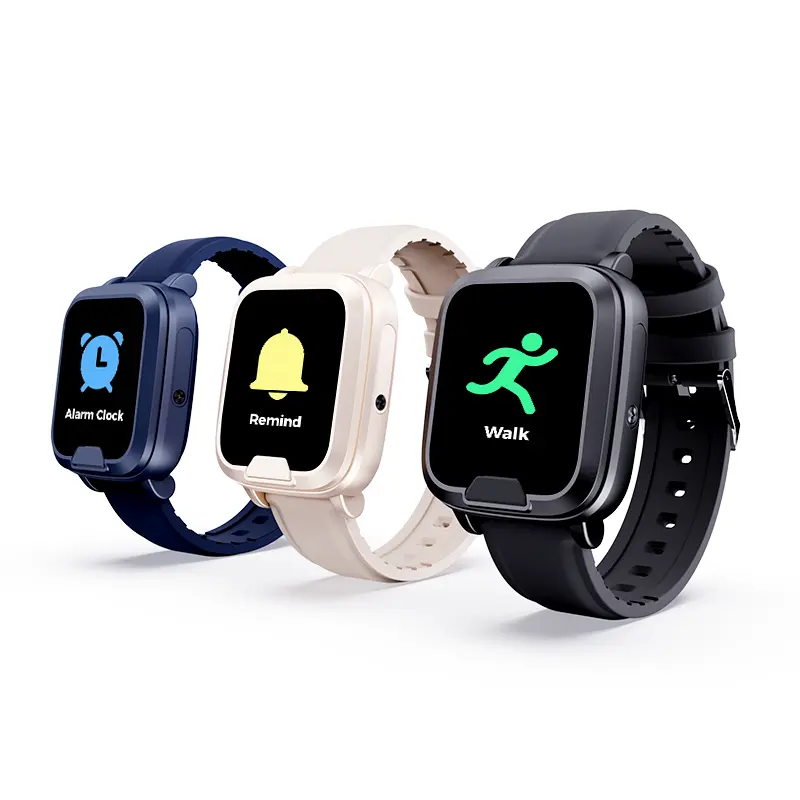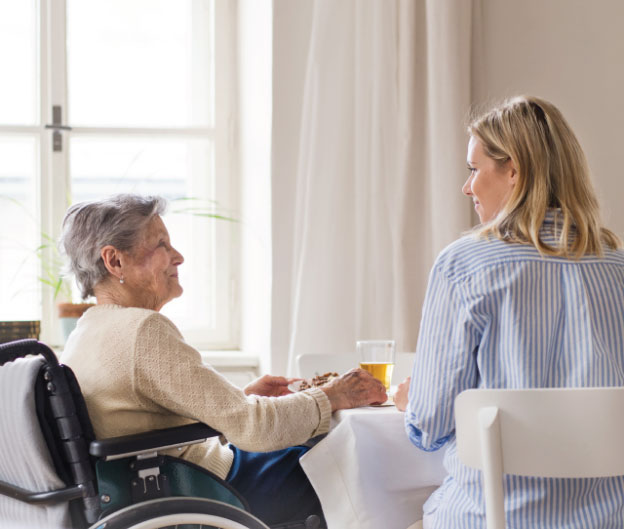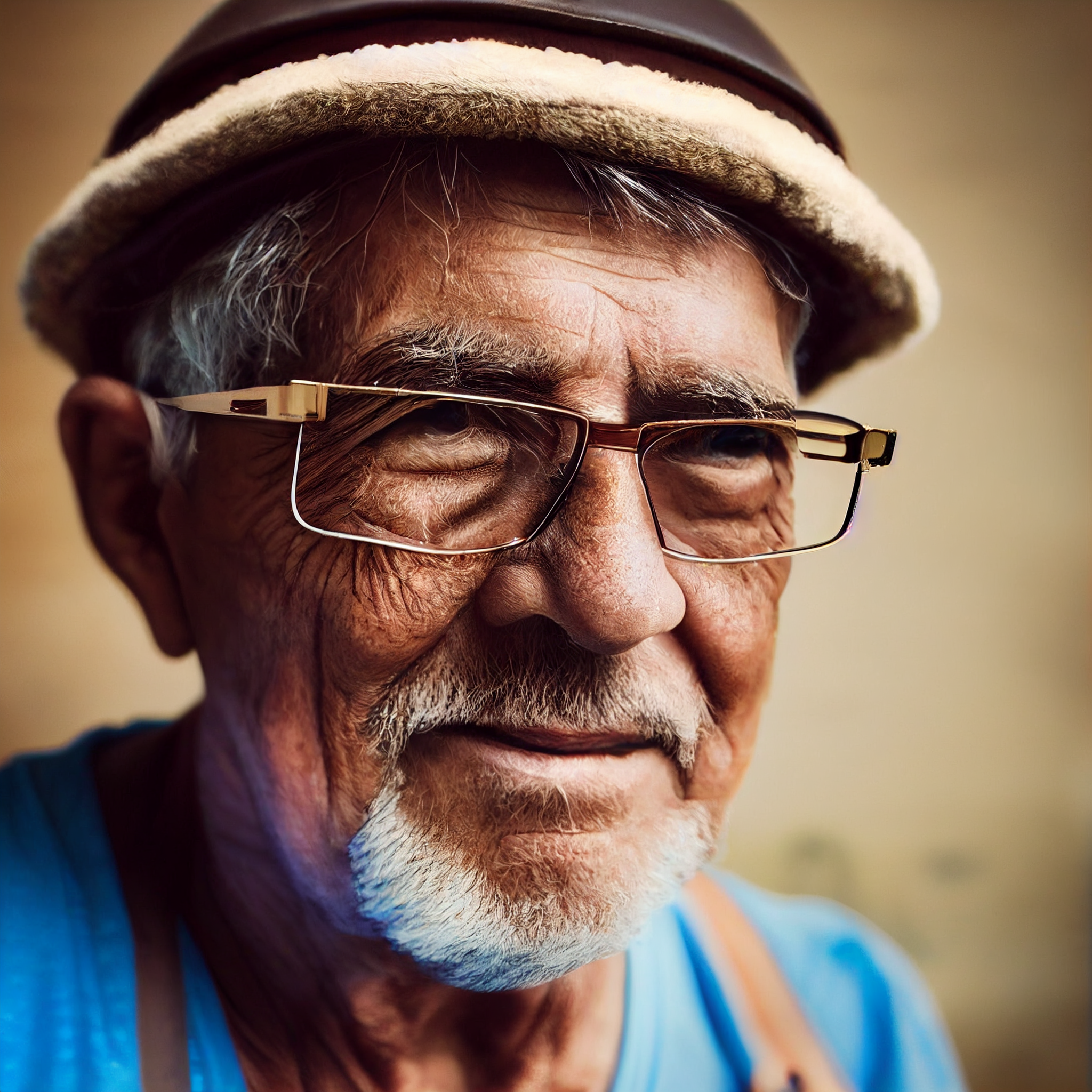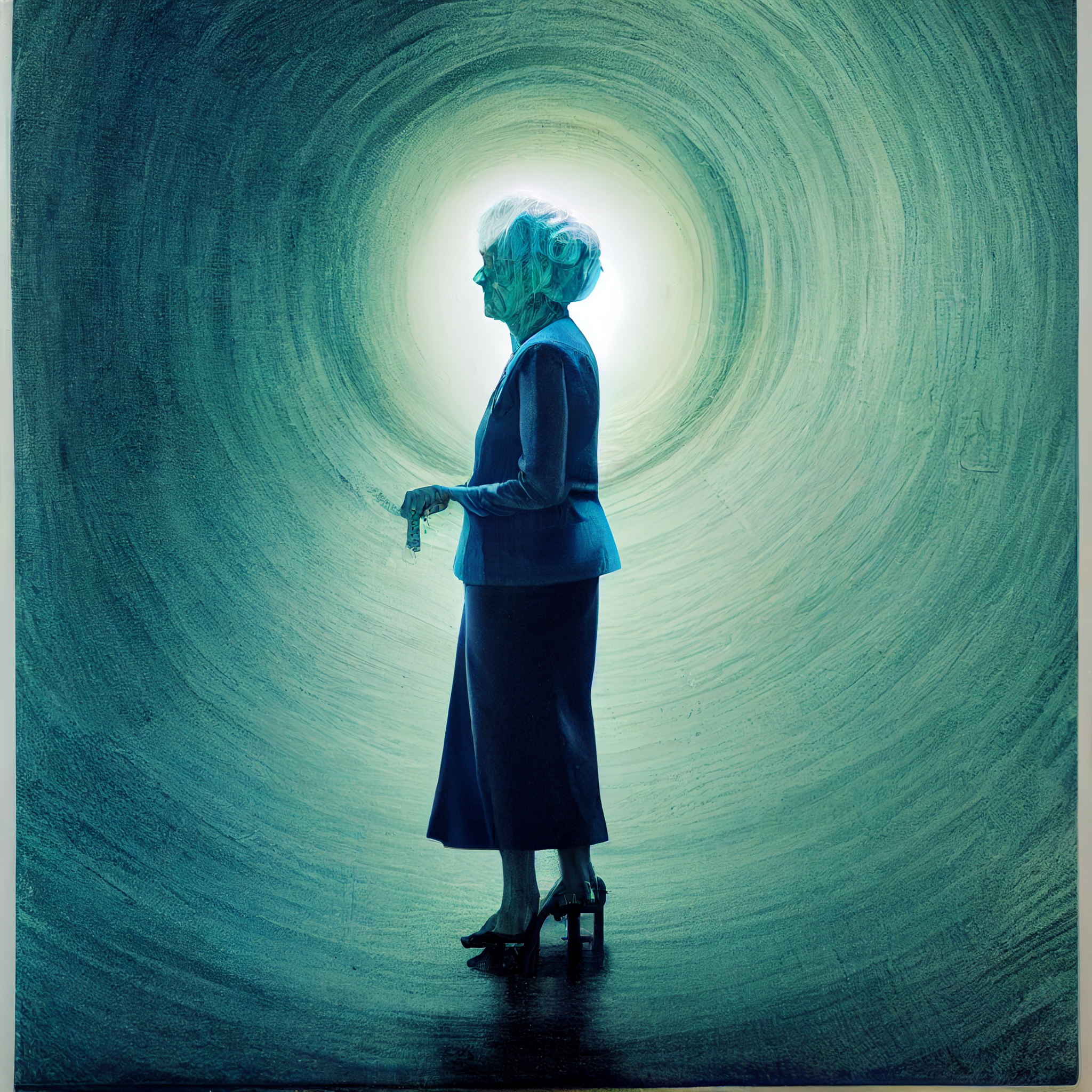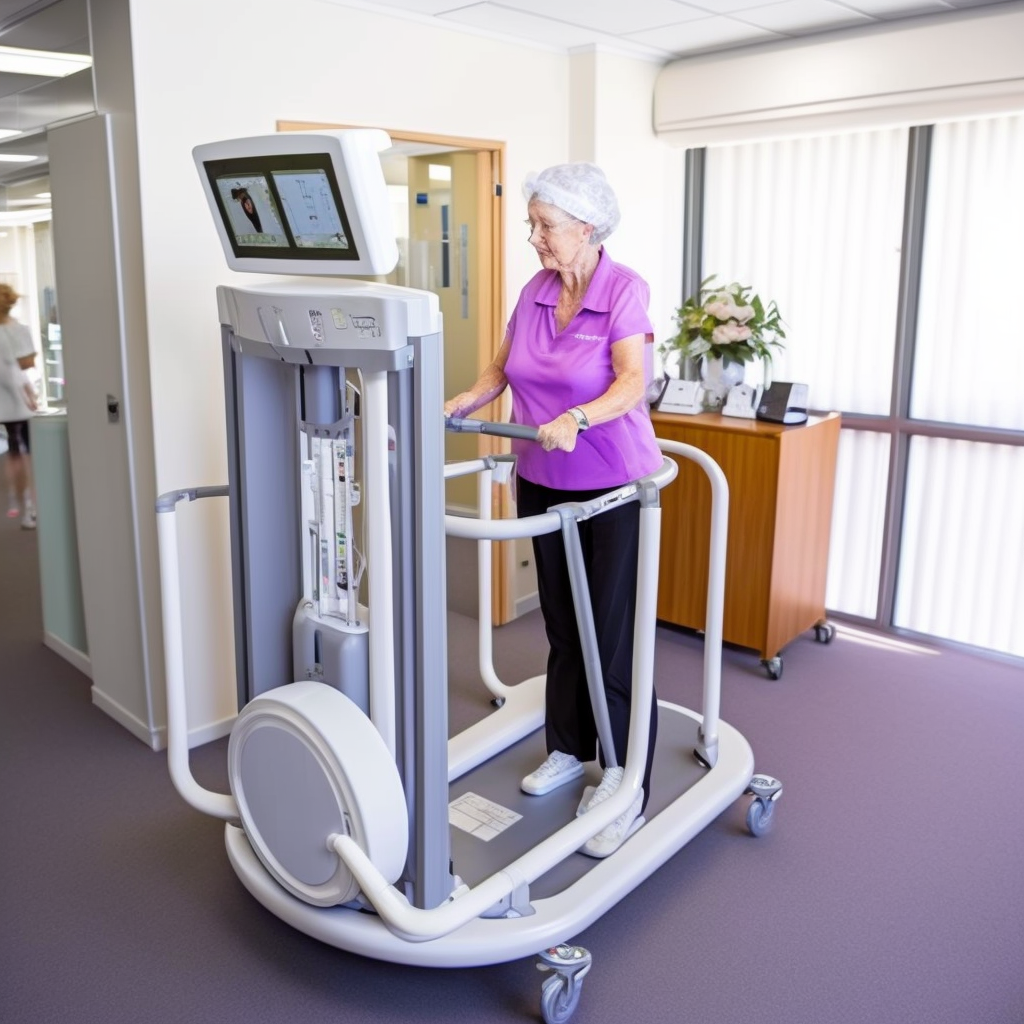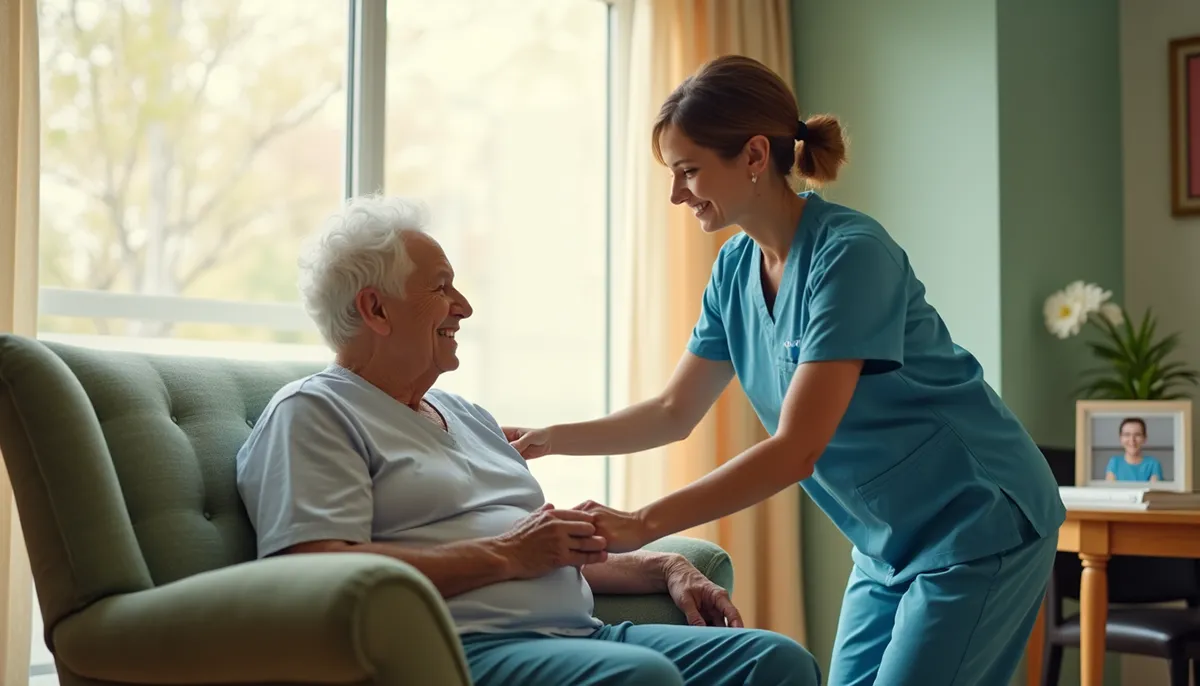Quick reality check: One older adult falls every 25 seconds on average in Australia, with one in three people over 65 experiencing a fall annually [20]. Even more concerning—78% of those who fall need help getting back up, often waiting 9-20 minutes or longer for assistance [17].
The real danger isn’t just the fall itself. It’s what happens next.
“Long lie” falls—being stuck on the floor for over an hour—create a deadly cascade. These extended periods link directly to major injuries, hospital admissions, and future aged care placement [5]. The statistics tell a sobering story: half of those who experience a “long lie” die within 6 months [7].
Shopping for fall detection systems in Melbourne isn’t about buying gadgets—it’s about preventing life-threatening situations. Falls remain the leading cause of injury among people aged 65 and older, making the right detection device essential for safety and independence.
Here’s what makes the stakes even higher: 78% of people who fall can’t get up without help [17]. They wait. And wait. Sometimes for over an hour in what medical professionals call a “long lie” [17] [5]. These situations don’t just cause physical harm—they’re strongly linked to major injuries, hospital stays, and the loss of independence that forces aged care placement [5].
Fall injury hospitalisations have increased over the past decade across Australia, turning device selection from a convenience choice into a survival decision.
This guide cuts through the confusion. You’ll discover how these devices actually work, who benefits most, what options exist locally, how reliable they really are, and where Melbourne residents can find trusted providers with proper support. Five critical considerations that could literally save a life—yours or someone you care about.
The challenge is real, but so are the solutions. Time to make an informed choice that delivers both safety and peace of mind.
How Fall Detection Systems Work (and Why They Save Lives)

Image Source: National Council on Ageing
Fall detection systems do one thing brilliantly: they spot trouble and call for help automatically. No fumbling for buttons when you’re hurt, confused, or can’t reach your phone.
Here’s the reality: These automated devices detect falls experienced by older adults and people with mobility challenges, delivering early detection that significantly reduces major complications [17]. They work when manual emergency buttons fail—and 80% of people don’t use their emergency buttons after falling anyway.
The technology addresses two critical gaps. First, it eliminates the “long lie” problem by ensuring rapid assistance. Second, it tackles fear of falling—that anxiety that keeps people housebound and dependent. For Melbourne residents living alone, these systems fill a dangerous safety void where a fall without detection could mean hours or days of waiting for help [27].
The Technology Behind Fall Detection
Modern fall detection systems use multiple sensors working together to identify when something goes wrong:
|
Sensor Type |
What It Measures |
Where It Goes |
|
Accelerometer |
Sudden velocity changes across three directions (X, Y, Z) |
Chest, waist, wrist |
|
Gyroscope |
Body rotation and orientation shifts |
Paired with accelerometer |
|
Altimeter |
Vertical movement and height changes |
Built into wearable devices |
|
Barometer |
Additional altitude confirmation |
Premium devices only |
|
Infrared or mmWave (radar) sensors |
Movement patterns in non-wearable systems |
Throughout home environment |
Wearable vs non-wearable—what works better?
Wearable systems win on cost and portability, but only if you actually wear them [37]. Research shows trunk placement (chest or waist) delivers median sensitivity of 97.5%—substantially better than wrist-worn devices.
Non-wearable alternatives – cameras, floor sensors, acoustic monitors – don’t need wearing but only work where they’re installed [5]. Great for bathrooms and bedrooms where most falls happen, limited everywhere else.
Smart Algorithms: Separating Real Falls from Daily Life
Raw sensor data means nothing without intelligent processing. These systems analyse three key factors:
Body position changes – sudden orientation shifts
Activity patterns – movement intensity and type
Motion smoothness – abrupt acceleration changes [5]
The real intelligence lies in distinguishing between genuine falls and normal activities like sitting down quickly or exercising. Machine learning algorithms now process thousands of movement patterns, identifying subtle differences that reduce false alarms whilst catching real emergencies [17].
System limitations you should know: Slow movements like sliding off furniture often go undetected—algorithms avoid triggering on minor motions to prevent false alarms [5]. Falls from sitting positions or those broken by furniture also challenge most sensors.
What Happens When a Fall is Detected
The emergency response sequence activates automatically:
Device sounds alert or vibrates
Confirmation screen appears: “Fall detected?” or other message
10-30 second cancellation window (typical)
Alert transmits to contacts or monitoring centre if not cancelled
GPS location data sends with alert
Staff attempt two-way voice communication
Emergency services dispatched if no response [5]
Critical advantage: This works without manual button pressing—essential when injuries or confusion make self-activation impossible. Advanced systems even measure vital signs during fall detection, giving emergency responders crucial health data before they arrive [5].
Why This Technology Saves Lives
Fall detection systems eliminate the most dangerous aspect of falling: the wait for help. They work when you can’t, ensuring assistance arrives during those critical first minutes when prompt intervention makes the difference between minor injury and life-threatening complications.
For Melbourne residents, especially those living independently, these systems provide a safety net that preserves both security and independence—letting you maintain your lifestyle whilst knowing help is always just a fall away.
Who Should Consider a Fall Detection System in Melbourne?
Falls are still Victoria’s No. 1 injury threat. They accounted for 72% of injury-related hospital admissions and 53% of emergency department presentations across the state [37]. The numbers from Melbourne hospitals paint an even grimmer picture—31,693 Victorian adults aged over 65 were admitted following falls in just one year [37].
Age makes everything worse. Admission rates jump from 1,096 per 100,000 in the 65-69 age group to 4,879 per 100,000 for those aged 80-84 [37]. Women face the highest risk at 3,997 per 100,000 compared to 2,406 per 100,000 for men [37].
Here’s what makes Melbourne’s situation critical: fall-related hospital admissions increased by 20% between 2012 and 2018 [37]. That trend shows no signs of slowing.
Health Conditions That Multiply Fall Risk
Certain medical conditions turn routine movements into dangerous moments. If you live with any of these conditions, automatic fall detection isn’t luxury—it’s essential protection:
|
Condition |
How It Increases Fall Risk |
|
Parkinson’s disease |
Affects movement control and balance [2] |
|
Stroke |
Changes mobility patterns and reaction times [39] |
|
Arthritis |
Causes joint pain and restricted movement [39] |
|
Diabetes |
Can cause dizziness and reduced foot sensation [39] |
|
Epilepsy |
May result in sudden loss of consciousness [3] |
|
Dementia/Alzheimer’s |
Impairs judgement and spatial awareness [8] |
The usual suspects pile on with age: weaker muscles, slower reflexes, vision changes. Exercise programmes targeting balance and strength cut fall risk substantially [38], but they can’t eliminate every danger. Fall detection provides crucial backup when prevention fails.
The Deadly Reality of Living Alone
Melbourne’s independent seniors face a hidden killer—not the fall itself, but what happens next. Half of those who experience a “long lie” die within 6 months.
Here’s the shocking truth about traditional alarm systems: 80% of older adults don’t actually press their emergency button after falling. Pain, confusion, or unconsciousness makes manual activation impossible when you need help most.
“Long lie” consequences stack fast:
Dehydration and hypothermia within hours
Pressure sores develop rapidly
Muscle damage and pneumonia risks climb
Fear of falling increases → less activity → weaker muscles → higher fall risk
Those living alone without regular check-ins face the highest danger. Help might not arrive for hours or days without automatic detection [9].
When Medications Become Fall Hazards
Taking five or more medications daily significantly increases fall probability [5]. The usual culprits cause dizziness, confusion, and balance problems:
High-risk medication categories:
Psychoactive medications: Anticonvulsants, antidepressants, antipsychotics, benzodiazepines, sedatives [10]
Blood pressure medications: Especially those causing orthostatic hypotension [10]
Muscle relaxants: Impair coordination and balance [10][11]
Pain medications: Opioids cause drowsiness and confusion [11]
Anti-Parkinson agents: Ironically increase fall risk despite treating movement disorders [11]
Multiple medications = multiplied risk. The more pills in your daily routine, the higher your fall probability climbs [5].
Bottom line: Discuss every medication with your GP or pharmacist. Some fall risks hide in prescription bottles.
Your Fall Detection Decision
One in three adults aged 65+ fall each year in Australia [37]. For Melbourne residents facing elevated risks through age, medical conditions, living situations, or medication use, automatic fall detection offers potentially life-saving intervention.
Manual emergency buttons fail when you can’t reach them. Automatic systems work when consciousness, mobility, or pain make pressing buttons impossible. That difference saves lives during the critical moments when help means survival.
What Types of Fall Detection Devices Are Available in Australia?
Two main categories dominate the Australian market: home-based systems that work within a fixed range, and mobile systems that function anywhere with network coverage. The choice between them often determines whether you get help or remain stranded.
Australian fall detection technology has evolved rapidly. Today’s devices range from basic pendant personal alarms to sophisticated smartwatches with GPS tracking, two-way communication, and adjustable sensitivity settings. Fall detection accuracy spans 85-97% depending on device placement and technology used [12].
The key isn’t finding the most advanced device—it’s matching the right technology to your actual lifestyle and mobility needs.
Home-Based vs Mobile Systems: Know the Trade-offs
Home-based systems connect through your landline or NBN via a fixed base station. These include a central unit installed at a specific location, wearable transmitters with limited range (usually 30 metres from the base unit) [13], and direct connection to monitoring centres or pre-programmed contacts.
Mobile systems operate independently through mobile networks—no base station required. They work anywhere with mobile coverage, include integrated SIM cards for direct communication, and offer GPS capabilities for outdoor location tracking.
|
Feature |
Home-Based Systems |
Mobile Systems |
|
Coverage |
Limited to home (≈30m radius) |
Anywhere with mobile signal |
|
Power source |
Hardwired with battery backup |
Requires regular charging (1-3 days) [14] |
|
Initial cost |
Higher upfront investment |
Lower purchase price |
|
Location tracking |
Fixed home address only |
GPS positioning capability |
|
Best suited for |
Limited mobility, home-bound users |
Active, independent lifestyle |
Home-based systems appeal to first-time users for their simplicity, yet mobile systems increasingly become the preferred choice for their flexibility and additional features.
Wearable Options That Actually Get Worn
Pendants remain Australia’s most common choice. The Safe-Life pendants exemplify this category, using sensors that measure sudden altitude and speed changes [3]. Critical detail: wear pendants outside clothing where they can detect movement accurately.
Watches combine fall detection with everyday functionality:
Heart rate monitoring and step counting [15]
Blood oxygen measurement [1]
Two-way communication capabilities
Multiple positioning systems for location tracking
Clip-on devices attach to clothing or belts, appealing to those uncomfortable with pendants or watches [8]. Similar functionality, less conspicuous appearance.
Australian Solutions: Safe-Life
Several Australian brands develop fall detection systems tailored for local conditions and needs.
Safe-Life Falls Detection Watch delivers:
Advanced motion sensors and algorithms [1]
Immediate alerts to pre-programmed emergency contacts
Built-in GPS, Wi-Fi, and Bluetooth for precise location tracking
Two-way communication through integrated microphone and speaker
Blood oxygen saturation (SpO2) measurement [1]
GPS Tracking and Two-Way Communication: When Location Matters
Modern fall detection devices incorporate advanced communication features that significantly boost effectiveness.
GPS tracking enables precise location identification—crucial when falls occur outside the home. When activated, these systems transmit location data via SMS messages with Google Maps links [1], direct transmission to monitoring centres [3], and real-time updates to caregivers’ mobile applications.
Two-way communication allows voice interaction between the fallen person and responders. This feature assesses situation severity, provides reassurance during emergency response, reduces unnecessary ambulance call-outs, and functions through built-in speakers and microphones.
For Melbourne residents who maintain independent activities, these features prove invaluable. The Safe-Life Mobile Watch offers showerproof design with built-in fall detection that works wherever mobile coverage exists.
Key Takeaway: Match Device Features to Your Actual Daily Routine
Fall detection effectiveness depends on selecting devices that align with your specific requirements and habits. Home-bound individuals might benefit most from fixed systems, while active people require mobile solutions with GPS capabilities. The best fall detection system is one that’s consistently worn, comfortable to use, and matches your lifestyle needs rather than offering the most features.
How Reliable Are Fall Detection Systems?
No fall detection system catches 100% of incidents—but the right technology with proper placement delivers fall detection accuracy rates from 72% to 99% depending on what you choose [17].
The numbers tell an encouraging story about technological progress, yet understanding system limitations prevents dangerous overconfidence.
Detection Accuracy: What the Research Shows
Machine learning algorithms consistently outperform basic threshold systems. Here’s how different technologies stack up:
|
Algorithm Type |
Average Accuracy |
Sensitivity |
Specificity |
|
Threshold-based |
92.6% |
92.6% |
97.7% |
|
Machine Learning |
97.9% |
95.1% |
97.5% |
|
Deep Learning |
98.9% |
90.9% |
97.3% |
Wearable accelerometer-based systems remain most common, though camera-based systems achieve 89.99% accuracy with privacy protections [19]. The reliability depends heavily on the detection mechanism you choose.
Current systems demonstrate sensitivity rates ranging from 72% to 99% [17]. That’s the ability to detect actual falls when they happen—a massive improvement over manual emergency buttons that require conscious activation.
False Alarms: The Price of Sensitivity
Frequent false alarms create “alarm fatigue”—caregivers start ignoring alerts, missing real emergencies [6]. The challenge lies in balancing sensitivity with specificity.
Common false alarm triggers:
Sitting down quickly or dropping into a chair
Dropping the device itself
Hitting the device against objects
Sudden movements during normal activities
Smart systems fight back with:
Pre-alarm sequences you can cancel within 5-10 seconds
Movement assessment periods after initial detection
Adjustable sensitivity settings for individual users
Manual cancellation options before emergency response activates
Device Placement: Location Determines Accuracy
Research reveals surprising findings about optimal sensor placement. The shinbone (left shank) produces the highest accuracy with an AUC value of 0.92 [21]—better than popular wrist or chest positions.
Placement effectiveness ranking:
Shinbone (left shank) – highest accuracy
Trunk (chest or waist) – second most effective
Wrist – popular but reduced sensitivity [18]
For pendant-style devices:
Wear outside clothing, not underneath
Position at breastplate level
Allow free movement without restriction
Avoid placement inside pockets or under layers
Technology Limitations You Need to Know
Despite advances, current systems struggle with specific fall types:
What gets missed:
Slow-motion falls occurring gradually over 1-2 minutes [6]
Falls from seated positions—most algorithms target standing falls with impact
Interrupted falls broken by furniture or grabbing supports
Balance instability monitoring—many systems only detect completed falls [20]
Other considerations:
Camera-based systems face privacy resistance despite filtering techniques [6]
Battery life limitations affect mobile systems
Regular charging required to maintain protection
Environmental factors can impact sensor accuracy
The Bottom Line on Reliability
Proper device selection, placement, and usage significantly enhance reliability. For Melbourne residents seeking maximum protection, automatic fall detection paired with traditional manual alarm buttons provides the most thorough safety coverage.
False alarms typically occur from sudden movements like sitting down quickly [6], but modern systems increasingly distinguish between genuine emergencies and routine activities. The shinbone and trunk remain scientifically proven as optimal sensor placement locations [18].
No system detects 100% of falls, making manual button press backup essential. Smart buyers understand both the capabilities and limitations—then choose systems that deliver the best protection for their specific circumstances.
Where to Buy Reliable Fall Detection Systems in Melbourne
Where to Buy Fall Detection Systems in Melbourne That Actually Work
Melbourne residents face a crowded marketplace of fall detection devices—but not all providers deliver the local support and reliability you need when seconds count.
Safe-Life leads the Australian market with devices designed specifically for local conditions and no ongoing monthly fees. Their product line covers everything from basic 4G pendants to advanced smartwatches with comprehensive health monitoring.
Australian-Made Protection: Safe-Life’s Advantage
Safe-Life specialises in fall detection systems built for Australian conditions and healthcare needs. Their focus stays laser-sharp on aged and disabled communities requiring dependable safety devices.
Core product range:
4G Emergency Duress Pendants → Portable alarms with built-in GPS positioning
4G Fall Detector Watches → Smartwatches combining emergency response with health tracking
The company’s commitment to accessibility shows in their pricing model. No monthly subscription fees – a crucial advantage when many competitors lock users into expensive ongoing contracts. Reasonable upfront costs make assistive technology available across Australia at price points seniors can actually afford.
Buying Options: Online and Local Access
Safe-Life products reach Melbourne residents through multiple channels:
| Purchase Method | Benefits | Best For |
|---|---|---|
| Online ordering | Complete product information, detailed specs, home delivery | Research-focused buyers |
| Authorised retailers | Hands-on demonstration, immediate collection | Those wanting to see devices first |
| Healthcare suppliers | Professional guidance, bulk ordering | Care facilities, health services |
Online purchasing offers comprehensive product information and specifications before you commit. The company delivers throughout Australia, ensuring Melbourne residents get prompt service regardless of location.
Setup Made Simple
Safe-Life designs activation for users who aren’t tech experts. The straightforward process requires minimal technical knowledge:
Essential setup steps:
Fully charge device upon arrival
Insert pre-configured SIM card (if needed)
Programme emergency contacts using included instructions
Test alert transmission to confirm functionality
No technical expertise required. No complex configurations. The system works out of the box for elderly users and their caregivers.
Local Support That Matters
Melbourne-based providers like Safe-Life offer critical advantages that international suppliers can’t match:
Face-to-face setup assistance when needed
Australian customer service for troubleshooting
Local warranty support without overseas complications
Expert advice tailored to individual circumstances
This local expertise proves invaluable for elderly users needing hands-on device assistance. When you’re dealing with life-safety equipment, accessible support makes the difference between confidence and confusion.
Smart Buying: What to Prioritise
Your purchasing decision should focus on providers offering established reputations, transparent pricing, and accessible local support. Companies like Safe-Life deliver Australian-made products with straightforward pricing models and ongoing Melbourne-based assistance.
Essential buying criteria:
No hidden fees → Clear upfront pricing
Local support → Australian-based service
Proven reliability → Established track record
Simple operation → Minimal technical complexity
The right fall detection system provides reliable protection when falls occur—but only if you choose providers committed to genuine local service rather than just device sales.
Fall Detection Systems: Melbourne Buyer’s Guide
Your decision comes down to five key considerations. This comparison cuts through the marketing noise to show what actually matters for Melbourne residents.
|
System Aspect |
Core Function |
What You Get |
Who Needs This |
Performance Reality |
Your Options |
|
How Systems Work |
Sensors detect sudden movement changes, trigger automatic alerts |
Accelerometers + algorithms that distinguish falls from daily activities |
Anyone at risk of “long lies” |
Machine learning beats basic threshold systems |
Wearable pendants, watches, or room-based sensors |
|
Who Should Buy |
Target high-risk individuals before falls happen |
24/7 monitoring without manual activation needed |
Adults 65+, chronic conditions, living alone, multiple medications |
Critical for the 80% who can’t reach help buttons after falling |
Tailored solutions for different risk profiles |
|
Device Types |
Match technology to lifestyle and mobility patterns |
GPS tracking, two-way calls, adjustable sensitivity |
Home-bound vs active seniors need different approaches |
85-97% accuracy varies by placement and tech |
Home base stations, mobile pendants, smartwatches, clip-ons |
|
Reliability Factors |
Distinguish real emergencies from false alarms |
Pre-alerts you can cancel, sensitivity adjustment, manual backup |
Users wanting fewer false calls to family/emergency services |
72-99% detection rates—placement and algorithms matter most |
Shinbone/trunk placement beats wrist wearing |
|
Melbourne Suppliers |
Local support for setup and ongoing issues |
Australian-made devices, no monthly fees, warranty coverage |
Residents wanting local service without subscription costs |
Local support prevents device abandonment |
Safe-Life pendants and watches with Melbourne-based assistance |
Bottom line: The best system is one you’ll actually wear consistently. Match the technology to your daily routine, not the other way around.
Choosing Safety and Peace of Mind
Fall detection systems aren’t just devices—they’re lifelines. For Melbourne residents facing elevated fall risks, the right system transforms a potentially fatal “long lie” into a managed emergency with prompt assistance.
Your specific circumstances drive the best choice. Active seniors benefit most from mobile GPS-enabled devices that work anywhere. Home-bound individuals often find fixed systems simpler and sufficient. Accuracy ranges from 72-99% depending on technology and placement, with trunk or shinbone positioning delivering optimal detection rates.
Key selection factors:
Daily routine and mobility patterns
Living situation and regular contact frequency
Budget considerations and ongoing costs
Local support availability for setup and troubleshooting
Device placement matters. Chest or waist positioning outperforms wrist-worn options for detection accuracy. Consistent wearing—outside clothing, unrestricted movement—directly impacts system effectiveness.
Companies like Safe-Life deliver Australian-made solutions with transparent pricing and Melbourne-based support. No monthly fees, local warranty coverage, and expert advice make the difference between a purchase and proper protection.
Remember: detection technology works best as part of broader fall prevention. Combine your device with home safety modifications, strength exercises, medication reviews, and regular vision checks. Multiple strategies create layered protection that keeps you steady and independent.
The choice is simple: invest in proven protection now or risk losing independence later. Quality fall detection systems deliver both practical safety and invaluable peace of mind—for you and everyone who cares about your wellbeing.
Start with one step. Research local options, check device features against your needs, and choose a provider offering proper support. Your future self will thank you for every safety measure implemented today.
How do fall detection systems actually work?
They typically use built-in sensors such as accelerometers (measuring sudden motion), gyroscopes (measuring orientation changes) and sometimes barometric or altimeter sensors. These detect a rapid downward movement or impact followed by little or no movement.
Are they 100% accurate at detecting falls?
Nope. No system catches every fall and some falls won’t trigger the alarm (for example slow slides, falls from sitting or broken by furniture).
You should still maintain manual emergency buttons or other backup.
Can fall detection work outside the home?
Yes — if the device supports mobile or GPS connectivity (not just a base-station system). The key is network coverage and device mobility.
What should I check before buying one (especially in Melbourne or Australia)?
Among things:
Matching the device to the wearer’s lifestyle (home-bound vs active): the range, mobility and features matter.
Make sure local support is available (Australian service, warranty, ease of use).
Device placement matters: where it’s worn affects detection accuracy.
Costs: Are there monthly fees? Up-front costs? Subscription or monitoring centre charges.
What kinds of fall detection systems exist and how do they differ?
Major categories:
Wearable devices (pendants, wristbands, smartwatches) that detect falls and alert.
In-home or room based systems (floor sensors, radar, cameras) that monitor environment rather than the body.
Each has pros & cons: wearables depend on being worn; non-wearables depend on being installed and being in the monitored space.
Is a simpler system without fall detection good enough?
It depends. If the person is low risk and always monitored, maybe. But if there’s a high fall risk (older age, medical conditions, living alone) then automatic fall detection adds a meaningful layer of protection.
What are common triggers of false alarms (so I don’t go crazy with them)?
Examples include: getting down into a chair too quickly, dropping the device, sudden movement that isn’t a fall. Good devices allow false alarm cancellation and sensitivity adjustment.
Should I still review medications and do strength/balance exercises even if I have a fall detection device?
Yes. A device doesn’t replace prevention. Strength, balance, vision checks, home-safety modifications remain crucial. The device is a backup, not a fix for everything.
References
[1] – https://www.medicalguardian.com/medical-alert-blog/senior-safety/how-fall-detection-works
[2] – https://pmc.ncbi.nlm.nih.gov/articles/PMC10463813/
[3] – https://www.medstrom.com/solution/long-lie-fall-complications-causes-and-solutions/
[4] – https://pmc.ncbi.nlm.nih.gov/articles/PMC4087103/
[5] – https://www.aihw.gov.au/reports/injury/falls
[6] – https://pmc.ncbi.nlm.nih.gov/articles/PMC10255727/
[7] – https://www.physio-pedia.com/Long_Lie
[8] – https://www.sciencedirect.com/science/article/pii/S2667099225000350
[9] – https://pmc.ncbi.nlm.nih.gov/articles/PMC3711927/
[10] – https://www.medicalguardian.com/medical-alert-blog/senior-safety/how-fall-detection-works?srsltid=AfmBOorT9zp9LGmyE8rJyKeI7k1ZdxTtbb9wPJFvTO2ITAKBsL1tZazv
[11] – https://www.medicalcarealert.com/blog/what-is-fall-detection-and-how-it-works/?srsltid=AfmBOorlofvqXKiVwbUyXa1kJmT6kKzOnD19LwFV0bJ-YJ2QQi5U9qO6
[12] – https://www.binah.ai/the-cost-of-falls-how-advanced-fall-detection-can-save-lives-and-money/
[13] – https://www.health.vic.gov.au/ageing-and-aged-care/falls-prevention
[14] – https://www.health.vic.gov.au/your-health-report-of-the-chief-health-officer-victoria-2018/injury-prevention/falls-prevention
[15] – https://www.health.vic.gov.au/older-people-in-hospital/falls-mobility-and-self-care/falls
[16] – https://www.healthdirect.gov.au/falls
[17] – https://www.safetyandquality.gov.au/our-work/falls-prevention
[18] – https://www.injurymatters.org.au/programmes/stay-on-your-feet/information-for-health-and-community-workers/medication-and-falls/
[19] – https://www.cdc.gov/steadi/media/pdfs/STEADI-FactSheet-MedsLinkedtoFalls-508.pdf
[20] – https://bmcgeriatr.biomedcentral.com/articles/10.1186/s12877-023-04138-z
[21] – https://safelife.com.au/product/falls-detection-watch-medical-alert/
[22] – https://pmc.ncbi.nlm.nih.gov/articles/PMC10880526/
[23] – https://link.springer.com/chapter/10.1007/978-3-031-84158-3_5
[24] – https://pmc.ncbi.nlm.nih.gov/articles/PMC10205068/
[25] – https://pmc.ncbi.nlm.nih.gov/articles/PMC9837266/
[26] – https://safelife.com.au/fall-detection-devices-no-monthly-fee/
[27] – https://safelife.com.au/product-category/falls-prevention-alarms-aged-disabled





